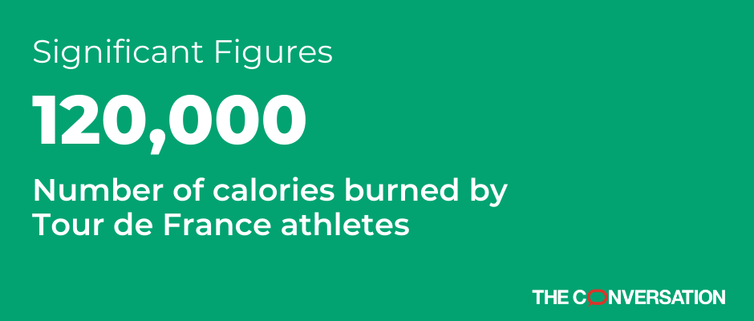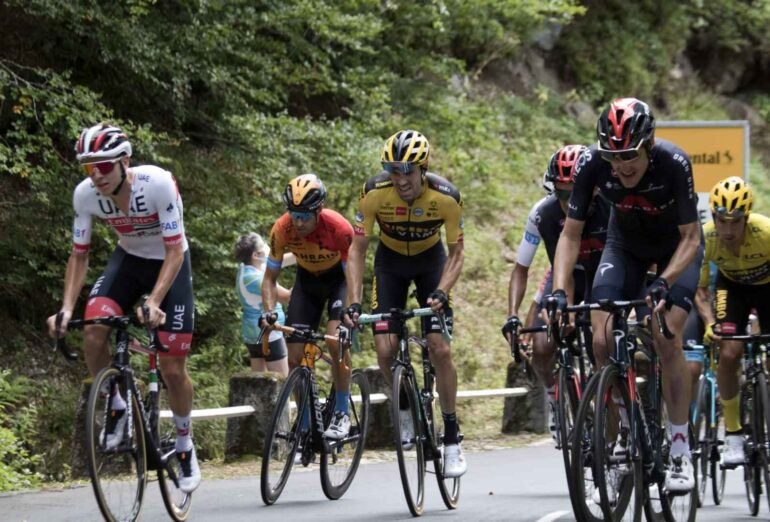
CC-BY-ND.
Imagine you begin pedaling from the start of Stage 12 of this year’s Tour de France. Your very first task would be to bike approximately 20.6 miles (33.2 km) up to the peak of Col du Galibier in the French Alps while gaining around 4,281 feet (1,305 m) of elevation. But this is only the first of three big climbs in your day. Next you face the peak of Col de la Croix de Fer and then end the 102.6-mile (165.1-km) stage by taking on the famous Alpe d’Huez climb with its 21 serpentine turns.
On the fittest day of my life, I might not even be able to finish Stage 12 – much less do it in anything remotely close to the five hours or so the winner will take to finish the ride. And Stage 12 is just one of 21 stages that must be completed in the 24 days of the tour.
I am a sports physicist, and I’ve modeled the Tour de France for nearly two decades using terrain data – like what I described for Stage 12 – and the laws of physics. But I still cannot fathom the physical capabilities needed to complete the world’s most famous bike race. Only an elite few humans are capable of completing a Tour de France stage in a time that’s measured in hours instead of days. The reason they’re able to do what the rest of us can only dream of is that these athletes can produce enormous amounts of power. Power is the rate at which cyclists burn energy and the energy they burn comes from the food they eat. And over the course of the Tour de France, the winning cyclist will burn the equivalent of roughly 210 Big Macs.
Cycling is a game of watts
To make a bicycle move, a Tour de France rider transfers energy from his muscles, through the bicycle and to the wheels that push back on the ground. The faster a rider can put out energy, the greater the power. This rate of energy transfer is often measured in watts. Tour de France cyclists are capable of generating enormous amounts of power for incredibly long periods of time compared to most people.
For about 20 minutes, a fit recreational cyclist can consistently put out 250 watts to 300 watts. Tour de France cyclists can produce over 400 watts for the same time period. These pros are even capable of hitting 1,000 watts for short bursts of time on a steep uphill – roughly enough power to run a microwave oven.
But not all of the energy a Tour de France cyclist puts into his bike gets turned into forward motion. Cyclists battle air resistance and frictional losses between their wheels and the road. They get help from gravity on downhills but they have to fight gravity while climbing.
I incorporate all of the physics associated with cyclist power output as well as the effects of gravity, air resistance and friction into my model. Using all that, I estimate that a typical Tour de France winner needs to put out an average of about 325 watts over the roughly 80 hours of the…



